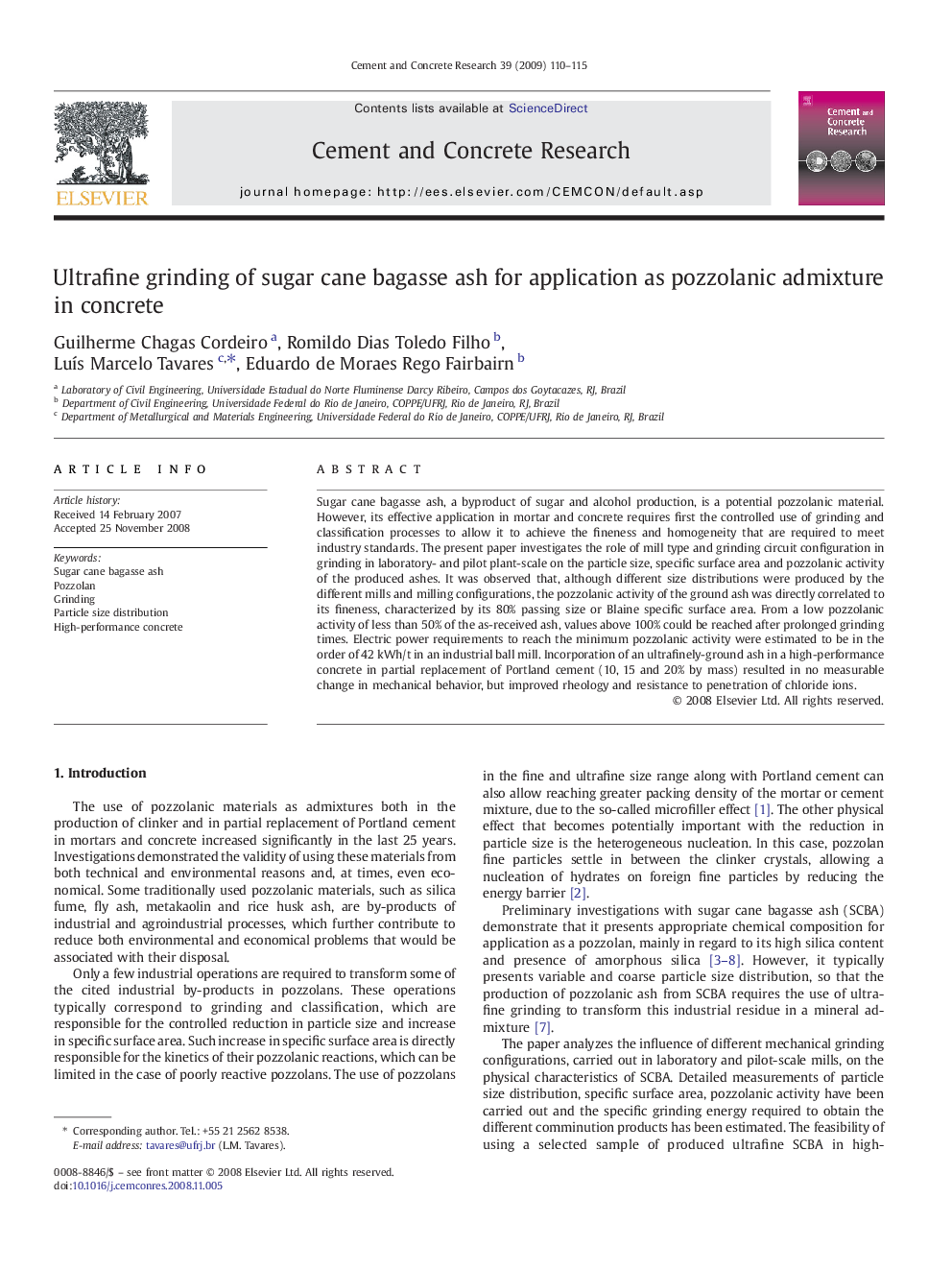| Article ID | Journal | Published Year | Pages | File Type |
|---|---|---|---|---|
| 1457357 | Cement and Concrete Research | 2009 | 6 Pages |
Sugar cane bagasse ash, a byproduct of sugar and alcohol production, is a potential pozzolanic material. However, its effective application in mortar and concrete requires first the controlled use of grinding and classification processes to allow it to achieve the fineness and homogeneity that are required to meet industry standards. The present paper investigates the role of mill type and grinding circuit configuration in grinding in laboratory- and pilot plant-scale on the particle size, specific surface area and pozzolanic activity of the produced ashes. It was observed that, although different size distributions were produced by the different mills and milling configurations, the pozzolanic activity of the ground ash was directly correlated to its fineness, characterized by its 80% passing size or Blaine specific surface area. From a low pozzolanic activity of less than 50% of the as-received ash, values above 100% could be reached after prolonged grinding times. Electric power requirements to reach the minimum pozzolanic activity were estimated to be in the order of 42 kWh/t in an industrial ball mill. Incorporation of an ultrafinely-ground ash in a high-performance concrete in partial replacement of Portland cement (10, 15 and 20% by mass) resulted in no measurable change in mechanical behavior, but improved rheology and resistance to penetration of chloride ions.
